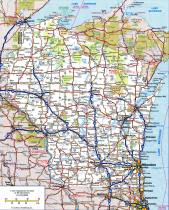Last March I attended the IA Summit 2017 in Vancouver where Elissa Frankle gave the presentation called. All Roads Lead to the Bathroom: Why Thinking of Visitors as People Makes Museums (and everywhere else) Better”
Elissa, a Museum Experience and Education Specialist, shared insightful methods and practices of serving museum visitors, which ultimately match the intended purposes of UX design.
Among other concepts she reminded us that people have physiological needs as stated in Maslow’s Hierarchy of needs. She highlights the idea that we need to think about visitors as, well, people.
She then sincerely asked “What is a user?”
For a discipline that prides itself if identifying and assigning meaning in what it does, this ought to be one the most important questions we ask ourselves for how we serve people in the future as the mediums we work in change from strictly digital to physical environments. Recognizing not only the context in which people live but recognizing them as people with needs .
In my current role, we only refer to our customers or users as “guests.” A term that I have become fully endeared to. When I think of welcoming a guest to my home or our place of business I intrinsically have a feeling of service towards them. It implies a status of how they should be treated and what we want them to feel like when they spend time with our services and products.
What we call the people we serve influences the way we think about them and how we solve problems for them.
“Customers” — is a shorthand for people who pay companies money for the exchange of goods and services.
- The hospitality and service industries usually refer to their customers as “guests.”
- Healthcare refers to their customers as patients.
- The Radio Industry calls their customers listeners
Designers adopted the moniker “user”, discreetly describing the person “using” the tool for a specific task.
“Personas.” were created in an effort to humanize the user and validate their goals. We are now using a myriad of tools and methods in order for us to get into users’ heads, understand them and learn more about them. Tools like customer journey maps, service blueprints, field studies, usability testing.
This brings me to a problem within the UX Design community that I’ve been sharing with others since I had small but powerful experience.
A few years ago while working for one of the largest hospitality & service companies in the world I was taken aback when I recognized that the working language did not include concepts, methods or references from the growing field of service design. I had admired this company’s brand, business and dedication to service and wondered how they had missed these working tools. At one point I cornered a business manager I respected and shared the principles of service design with him. After thanking me for the wonderful storytelling and clear and succinct presentation he shared that the concepts and principles I just presented were “…what we in the hospitality industry call doing business.”
I realized then that working in the defense of design, I had been making a prideful mistake. I had been so focused on the dogma of UX Design & Design Thinking that I had been missing a prime opportunity to learn from the best service professionals around. All too often we pat ourselves on the back for being focused on the “user.” Using our design sensibilities and specialized methods to make the best products, we seem to believe that we have the best way to make great products. This is often expressed by terms, tools methods and approaches that get coined as best practices.
In our effort to provide clarity for meaning in digital experiences we ended up creating new vocabulary for things that people live every day. And then we’re surprised when they don’t recognize our own description of their successes. This dedication to the dogma of design then creates an opportunity for misunderstanding if we don’t recognize it and stay dedicated to solving the problem.
Did this company have a holistic view of their business and each touchpoint? Yes of course. Did it look like a customer journey map at the time? Probably not. I’m sure they may have a few now, but the point remains. Design Thinking seems to be the new vocabulary for “doing business” and being customer centric.
Recently this year I saw Jared Spool share the idea that companies must have “infused UX” to accomplish great products that serve the users’ needs and create. Does that mean that a company must have a design team to achieve “infused UX?” I wholeheartedly agree that infused UX occurs in the development of truly disruptive products. But as heretical as this sounds for a career UX designer, I have come to believe the answer is no.
Infused UX does not have to look like the words and the concepts we are telling ourselves as designers. But it does have to be people focused and it does have to solve people’s problems.
A Product Director once shared with me some frustrations she had about working with designers. Stating that “they seemed so focused on empathy for our guests, whom they had only “met” through research but seemed to not have empathy for their partners of the team of different disciplines, with whom they work with every day. Focusing on best practices of Design Thinking all the while forgetting to practice empathy with real people.”
We’ve all gotten caught in the trap of “doing things the right way.” Many years ago, a leader of mine shared with me that in anything there is no perfection. There are less effective activities and more effective activities.
If empathy is the greatest differentiator between Design Thinking and other problem-solving methods, then we must practice it as much as possible, especially with those we work with. In other words, how you treat people around you affect the product you build that mean to serve people.
So, what do we do about this? As in any solution set, the answer lies in small things we can do today to move in that direction. From these experiences, here’s how I expect we might pivot in our working relationships and approach to design in the service of people.
Look at our organizations and see if we can discover activities that are customer focused that may not be recognized as “Design Thinking” activities; highlight them, support them, support the people who make those activities go. Be a part of the conversation. Offer help or at least a listening ear.
There are any number of techniques that could be considered in the Design Thinking wheelhouse. What techniques have room for improvement, can be modified, can be realized in different ways?
Find a way to define the people we serve as people; not just people who do a defined task with our companies once in a while, but as people.
Focus on being more effective, rather doing things the “right way.”
Spend as much time as possible learning the business. What services do they provide that solve people’s problems? How do they make money doing that?
Learn more about your business partners, co-workers etc. Who are they? What have they learned?
Identify where there is evidence of design thinking in your organization, and either leave it alone, celebrate it and/or learn from it, make it better if you can and learn from it.
Focus on the problem space and use everything available to solve the problem.
Interdisciplinary teams must value each member’s knowledge base and contribution equally regardless of where their knowledge base comes from.
Focus on people as people with needs and their problems rather than users and their goals.
Have a service oriented mind.
Whether or not you think your company is doing Design Thinking, the real challenge is to focus on people as people; and solve problems for them.
One last story to bring it all home.
In 2009 I attended DMI’s Re-Thinking Design Conference in San Francisco. Which I characterize as the best Design Managers in the world mashed up with the best MBA’s in the world as an experiment. I heard a business professor describe the first time she completed a card sort. She described it as a very powerful almost religious experience and was very excited to promote how helpful it was. I was once again flabbergasted at the ignorance for something I did almost every day. But I also recognize that I might be as excited about a data evaluation technique that I’ve never done before. And that the key to this was having a breadth of people in the room to share differing opinions finding a way to develop that holistic view. In any case there is no room for pride.
What is Design Thinking? …User Experience Design? Any way you put it, It’s serving people and doing business.

 landmarks as we passed them by and I saw exactly what they looked like. I recognized this desire to store and think about information in a spatial way. Ken Jennings shares his thoughts about it by saying. “That spatial way of storing information is apparently deeply hardwired into how our brain wants to learn things.”
landmarks as we passed them by and I saw exactly what they looked like. I recognized this desire to store and think about information in a spatial way. Ken Jennings shares his thoughts about it by saying. “That spatial way of storing information is apparently deeply hardwired into how our brain wants to learn things.” We see this value being manifest in our products everywhere now. Real-time data in relation to geography and time exposing the state of the environment around us giving us the ability to maximize the experience we live in. Examples include a rise in Data Visualization products like
We see this value being manifest in our products everywhere now. Real-time data in relation to geography and time exposing the state of the environment around us giving us the ability to maximize the experience we live in. Examples include a rise in Data Visualization products like  As Conversational UI, AI and ML become more of a reality understanding how to design great experiences has become more and more about the choices made about what to include and what to strip away.
As Conversational UI, AI and ML become more of a reality understanding how to design great experiences has become more and more about the choices made about what to include and what to strip away.

